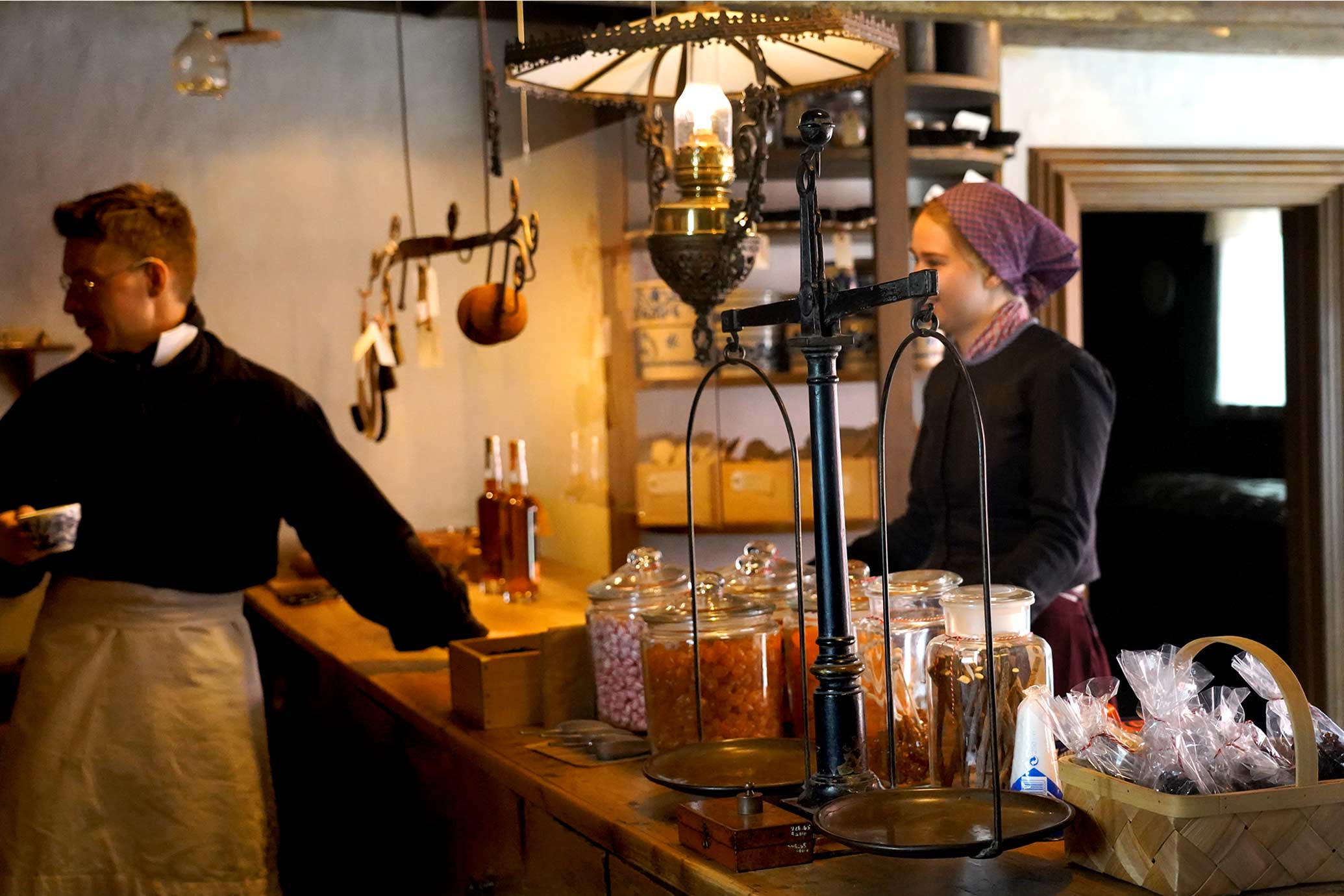The history of merchants
In 1864, the merchant’s yard was still the cornerstone of urban trade. The merchant would buy goods that the farmers had left over and sell them on to Norway, England, Hamburg or Copenhagen. In return, he bought foreign goods and sold them to the town’s citizens and the farmers in the surrounding area. The counter and the shelving behind it contain drawers for flour, spices, coffee, tea and similar goods, which were weighed out for each customer. The merchant sold wine and spirits, salted herring from barrels, rice and groats. He also sold and rented out porcelain and faience dinnerware as well as glassware.
The Farmers’ Room
In the farmers’ room next to the shop, farmers could warm up, have a bite to eat and enjoy a dram of schnapps. The room served as a waiting area for those who had business to discuss with the merchant, be it trade or financial advice.
The Merchant’s Office
This is where the merchant worked on bookkeeping, lending money and drawing up contracts. The leading merchants in the provinces ran highly versatile businesses. They held shares in ships that brought colonial goods such as sugar, tea and spices to Denmark. At the same time, they operated wholesale grain businesses, buying crops from farmers and selling them on.



